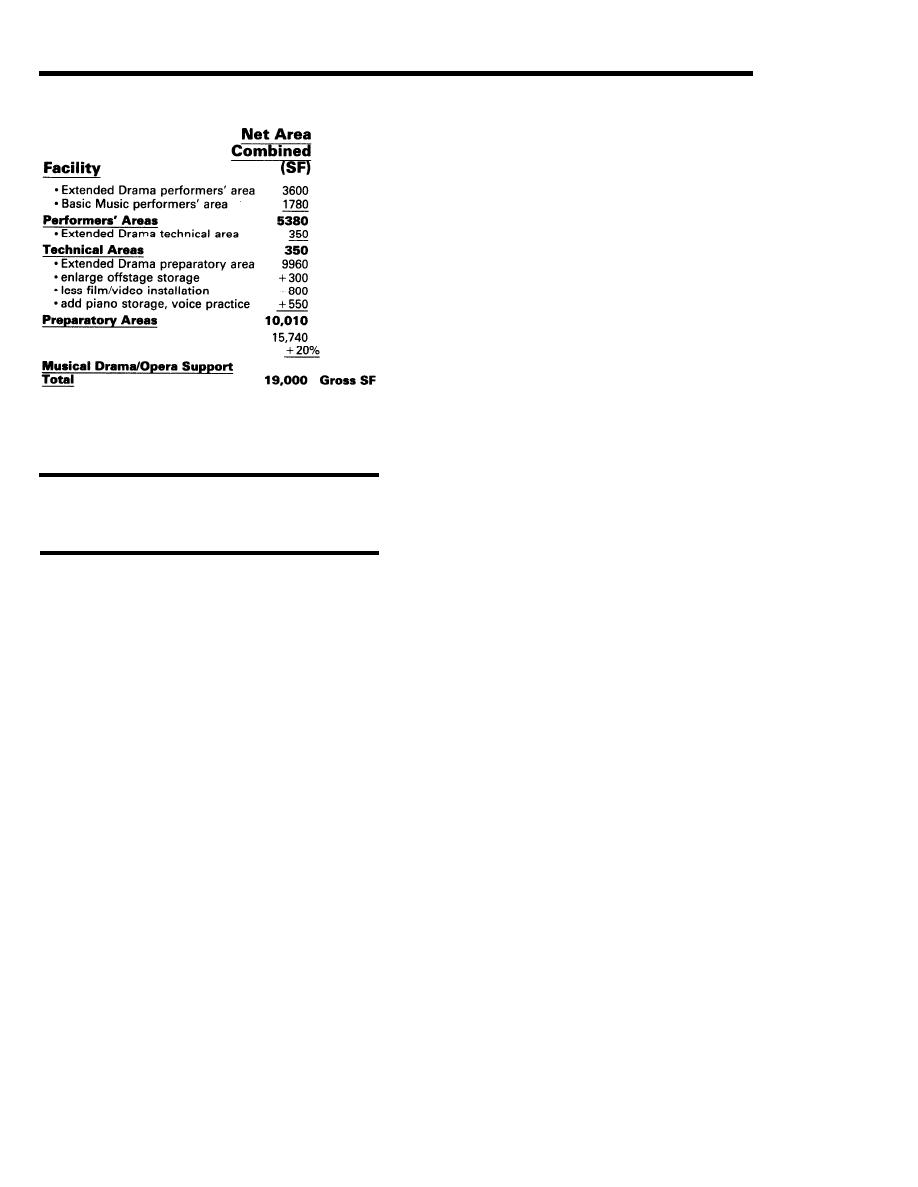
DESIGN GUIDE: MUSIC AND DRAMA CENTERS
DG 1110.3.120
CHAPTER 3: PERFORMANCE SUPPORT SPACE ALLOCATION
JANUARY 1981
B. CLASSIFICATION OF AUDIENCE
SUPPORT
There are three classes of Front End facilities
defined by their users' activities.
1. Public Facilities
These accommodate visitors and audience
members. At performance times, they serve to
control entry, provide for waiting and circulation
of many people, and permit social interaction
appropriate to community gatherings. In off
hours, they may be used for other group activ-
ities and include standard subfunctions required
for assembly purposes, such as rest-rooms,
drinking fountains and coin telephones.
2. Staff Facilities
These accommodate the administrative man-
agement. Except for box office activity and
house security, most use occurs between perfor-
mances. Regular activity includes promotional
DIVISION 3
work, arranging bookings, accounting and cler-
ical, advance and mail order ticket distribution,
THE FRONT END
program planning and general office work.
3. Service Facilities
These accommodate operating staff and special
functions arising from public assembly activity.
Custodial, office supply storage and staff lockers
are needed, as are coat rooms, food and bev-
3-13.
AUDIENCE SUPPORT
erage service, and first aid equipment for the
public and staff.
C. CHARACTERISTICS OF AUDIENCE
SUPPORT FUNCTIONS
Front End activity consists of the group of func-
Every performing arts facility intended for public
tions aimed at securing, organizing and serving
presentations requires all three classes of audi-
the public occupancy of a performing arts facil-
ence support. The dimensions and treatment of
ity. Compared to the Room and Backstage divi-
each depends on the using service's objectives
sions, it is the least dependent on the specific
as much as on the size of the audience.
performance type for function definition and
physical planning.
1. Public Functions
Physical planning does follow Room design in
These reflect established operating procedures
and common-sense requirements for dealing
its relationship to access patterns, but special
with large numbers of people in an orderly fash-
functions derive from the using service's objec-
ion. However, an attitude toward public partici-
tives, orientation toward the public, and identi-
pation is also conveyed, and for this reason the
fication of needs beyond common requirements.
definition of functions should be predicated on
For this reason, careful attention must be given
a clear statement of purpose. The visitor's initial
to the results of Chapter 2 evaluations in order
experience prepares him for the central purpose
that Front End design fits anticipated audience
of the facility. A receptive state of mind is es-
development and intended secondary uses of
sential to enjoyment, which in turn registers with
the MDC.
the performers and adds greatly to general sat-
3-72


 Previous Page
Previous Page
